核雕:果核上的“刀尖芭蕾”
果核,在大多數人眼裏,是品嘗鮮果後的棄物,但這小小的果核到了微雕師的手中,卻會化腐朽為神奇。
In most people's eyes, the pit of a fruit is a waste after tasting the fresh flesh, but in the hands of a miniaturist, this tiny nut can be turned from waste into wonder.
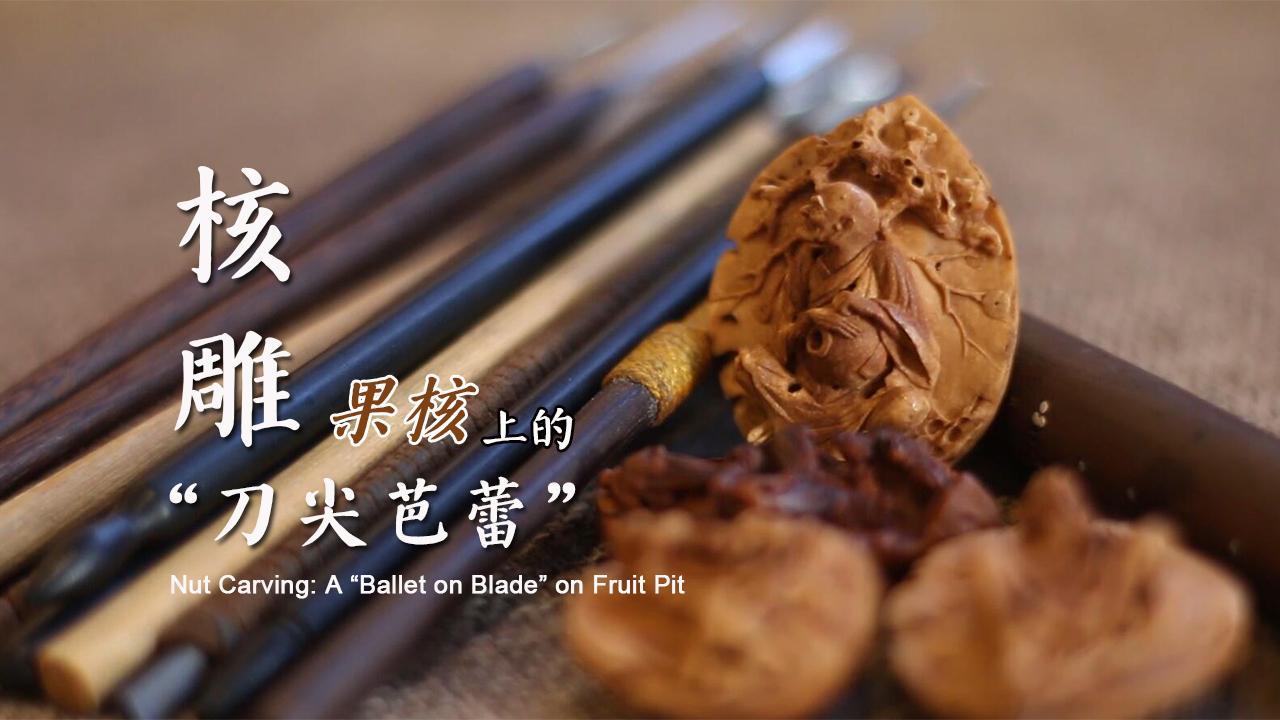
核雕是一門古老而又新興的藝術,2008年入選國家級非遺名錄。
Nut carving is both a time-honored and young art, and was selected as a national intangible cultural heritage in 2008.
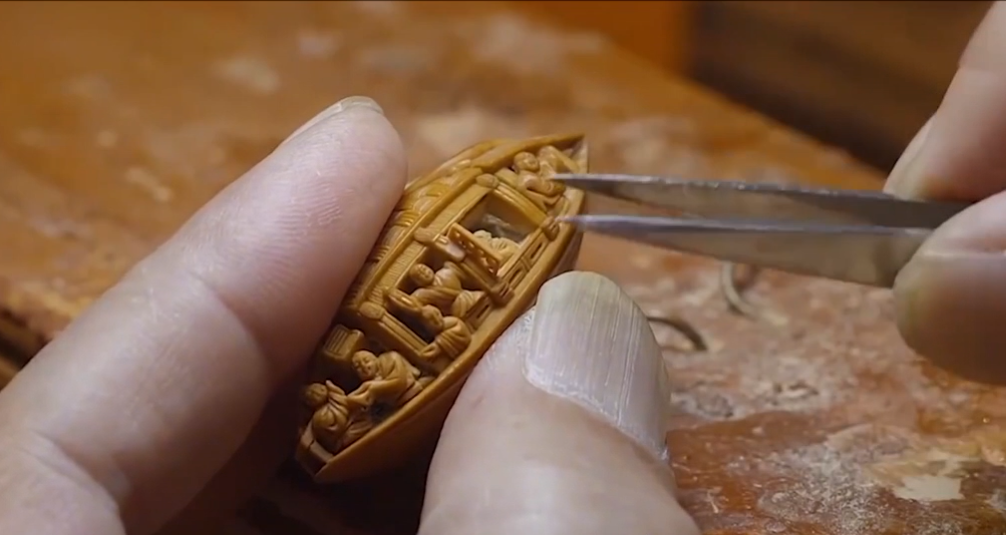
説核雕古老,是因為宋代就有關於它的文字記載,明朝的《核舟記》也是大家都熟知的古文。
It's time-honored because there were written records about the craft in as early as the Song Dynasty (960-1279), and the “On Nut Boat” in the Ming Dynasty (1368-1644) is a well-known ancient exposition.
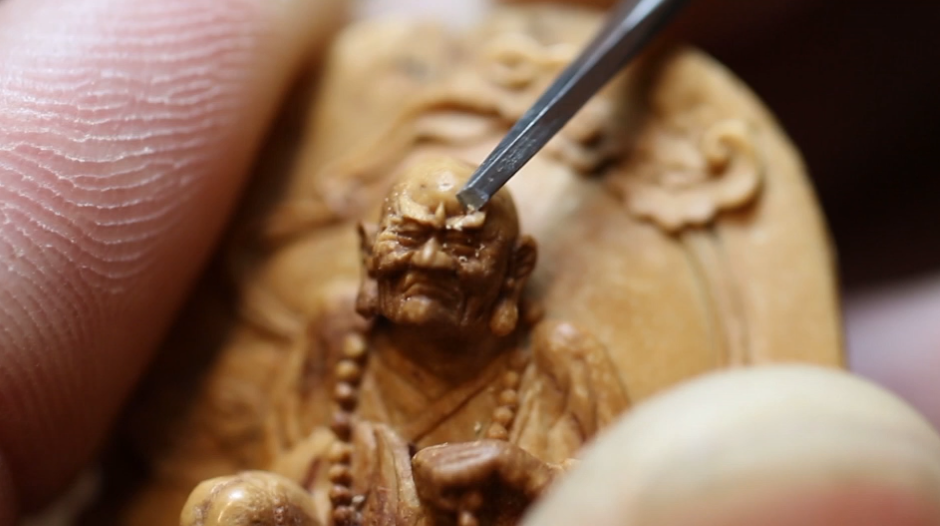
核雕的過程宛如在果核上跳起“刀尖芭蕾”,主要工具為銼、鑿、鑽。先用毛銼、光銼將果核進行初步加工,並設計構思、畫樣;之後用圓銼進行粗加工;再用鑿刀雕刻細部,刻畫人物的眉毛、眼睛、嘴部等;最後經過磨光、上蠟、打眼,串連成念珠,或配以底座,就成了欣賞品。
The sophisticated process of nut carving is like playing ballet on blade on the fruit pit, with the main tools being file, chisel and drill.
First, the pit has to go through preliminary processing with a rough file and a smooth file, and based on the initial shape, a design sample will be developed. Then the artisan will further process the pit with a round file, and use a chisel to carve details, creating the eyebrows, eyes, mouth, etc. Finally, after polishing, waxing, drilling, it can be linked into a string of beads or matched with a base, thus becoming an art craft.
小小的核雕,也有著不同的風格流派,在中國南北兩個地區藝術特色各不相同。
The nut carving, small as it is, also has different styles and schools. The craft's artistic characteristics differ in the north and south regions of China.
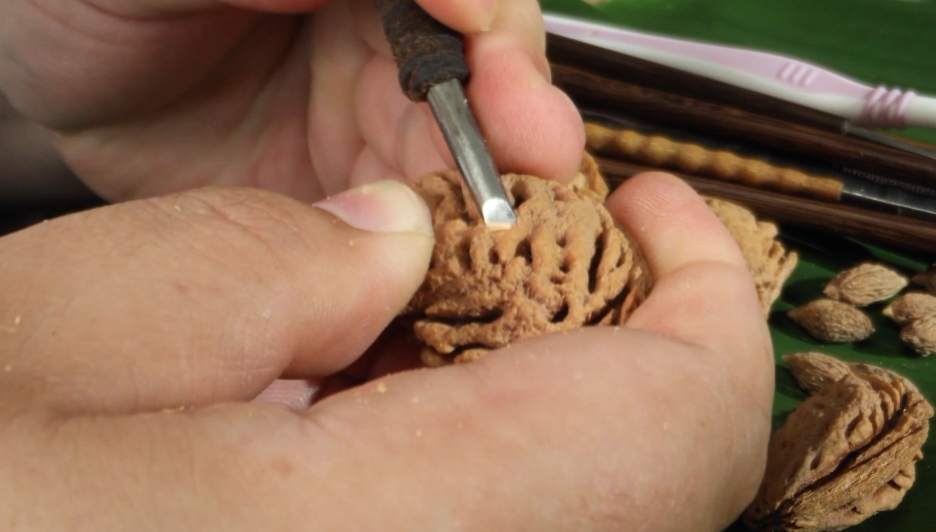
“北工”核雕主要集中在河北的廊坊和山東的濰坊。早在1915年,在美國舊金山舉辦的巴拿馬-太平洋萬國博覽會上,獲得金獎的核雕作品《馬拉轎車》就出自山東濰坊的手藝人都蘭桂。濰坊核雕常以桃核為主,並兼用核桃和其他原料。桃核表層有豐富的褶皺肌理,且有較大的凹凸起伏,巧妙利用桃核上縱橫無序、深淺不定的紋理,雕刻出栩栩如生的山水、人物等立體造型,以及刻畫歷史和神話故事等,方寸之間,萬千世界。每一個核雕作品都是一個故事,都具有生命力。1955年,時任總理周恩來出訪,濰坊核雕還被作為國禮贈送給外國友人。
The northern China style of nut carving is mainly practiced in Langfang City, Hebei Province and Weifang City, Shandong Province. In 1915, at the Panama Pacific International Exposition held in San Francisco, the nut carving work depicting a horse-pulled cart won the gold medal. It was a masterpiece from Weifang nut carving artisan Du Langui. Weifang nut carving is often practiced on peach pit, and sometimes uses walnut and other raw materials. The surface layer of peach pit is rich in fold texture, featuring obvious concave and convex variations. The peach pit's texture is skillfully leveraged to carve vivid three-dimensional shapes such as landscapes and figures, and depict history and fairy stories, among others. A wide variety of scenarios could be presented in the tiny space. Every nut carving work is a lively story. In 1955, during Premier Zhou Enlai's overseas visit, Weifang nut carving was presented to foreign friends as a national gift.
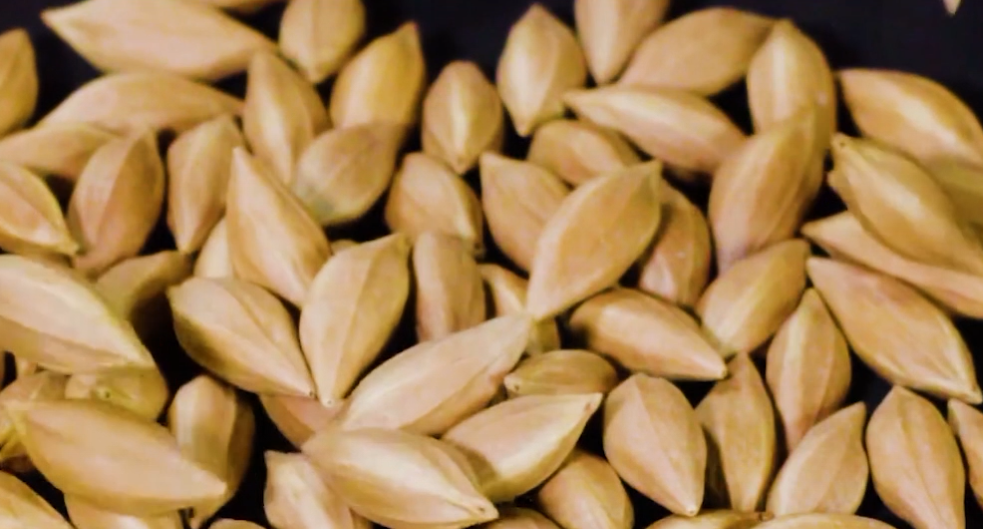
“南工”核雕主要分佈于江浙、廣東,多以橄欖核為載體。以蘇州核雕為例,選用的是一種外壁厚實、表面光滑的橄欖核,既能隨意運用,又能精細雕刻。與蘇州這座城市給人的印象一樣,“精緻”也是蘇州核雕的特徵,在手串、頸鏈上雕刻羅漢、彌勒、觀音等,小巧的粧飾、把玩之物,成為不少文玩愛好者的首選。
The southern China style of nut carving is mainly popular in Jiangsu, Zhejiang and Guangdong provinces, and mostly use olive pits for carving. Taking Suzhou nut carving as an example, olive pits with thick outer walls and smooth surfaces would be selected, as they can be used at will and finely carved.
Like the impression given by Suzhou, exquisiteness is also the feature of the city's nut carving. Carved pits in the shape of Arhat, Maitreya, Goddess of Mercy and others could be featured on bracelets and necklaces. These exquisite accessories and playthings are quite popular among many traditional handicraft lovers.
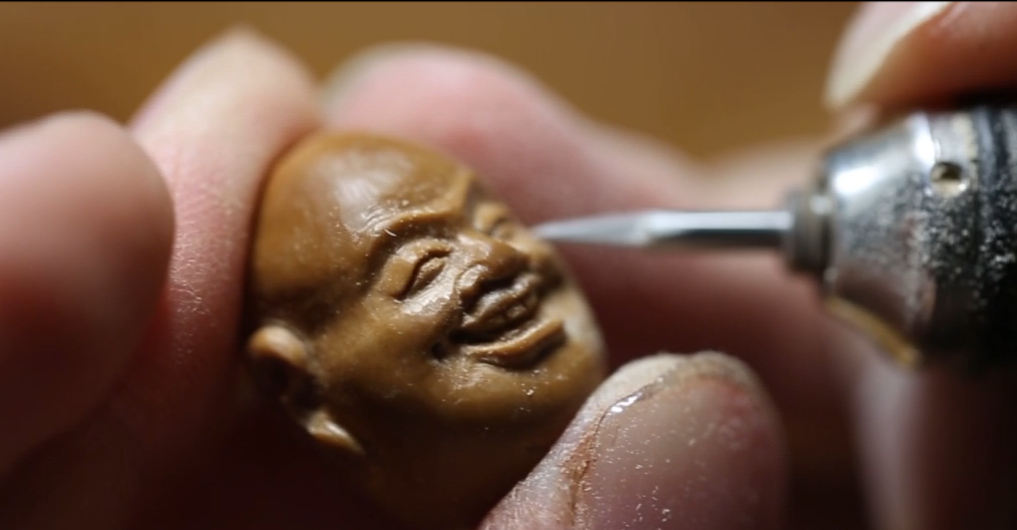
説核雕新興,則是因為當代興起核雕把玩之風只有不到二十年,從手工藝品變成了時尚寵兒。同時在資訊全球化的今天,地理位置也不再是限制,現代核雕中經常會有“南地北工”“北地南工”的互動。更多新生力量的加入也帶來了更多創新,現代審美、現代故事,結合科技手段,使核雕作品更具時代感,將核雕藝術推向新的高度。
Nut carving is also a young tradition as it has only been trendy for less than 20 years, featuring a shift from handicrafts to fashionable items. At the same time, in today's globalized information age, geographical location is no longer a limitation, and there are often interactions between the two styles and two regions of nut carving in contemporary practice. The addition of new forces has also led to more innovations. Modern aesthetics and present-day stories, combined with scientific and technological means, make nut carving works more up-to-date and push the craft to a new height.










